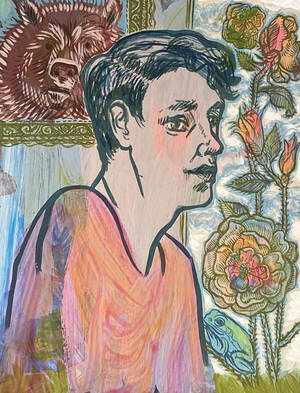I am not what you would call a rugged outdoorsman or even the crunchy type. I’d struggle to pitch a tent, I don’t make overnight oats, I can’t start a fire, I don’t go bouldering on weekends, I can’t spell kom-boo-cha, I don’t have a pair of Tevas, and you’ll never see me dangling off the side of El Capitan in one of those climber cocoons.
I’m a safe outdoorsman.
A safe outdoorsman is not a wimp; he is a cautious pioneer. A safe outdoorsman loves a good screened-in porch, bug spray and well-marked trails. A safe outdoorsman worries about ticks and poison ivy — you should too, by the way. If there is a mosquito in the house, a safe outdoorsman loses sleep; if there are several, he goes to war.
A safe outdoorsman has zero interest in the latest high-performance trail runners or thermoses that can keep your coffee warm on Neptune. A safe outdoorsman will go on camping trips and other reasonably strenuous excursions, so long as a real outdoorsman is in charge.
But since Bear Grylls is usually unavailable, and I generally have two young boys in tow, this safe outdoorsman mostly sticks to his local trails and regional parks. Call them mini-excursions or low-risk, high-reward outings or, more commonly, microadventures.

The microadventure is not a new term or idea — it was coined by English outdoorsman Alastair Humphreys — but it could use some fine-tuning. Many people cheerily suggest that the perfect microadventure is driving four hours with small children to a national park for a night beneath the stars. Beautiful. All you’ll need is a tent, sleeping bags, pillows, parkas, PJs, a grill, lighter fluid, flashlights, batteries, a first-aid kit, sunscreen, bug spray, your entire kitchen and bathroom, phone chargers, outlets, a generator, games for the car, the kids’ Pokémon binders and favorite stuffed animals and enough food to survive the apocalypse.
I’d rather trek to Mordor.
Think smaller. For me, a microadventure is simply getting outside somewhere less than an hour from my house by car. Think simpler: If you have to pack more than water and some granola bars, it’s a migraine, not a microadventure.
Convenience and simplicity aside, my idea of a microadventure has a number of benefits. Chief among them, it opens your eyes to the daily wonders that surround you. The more you microadventure, the more you will notice things in your backyard that you never noticed before, the better acquainted you’ll be with your friendly regional flora and fauna.
On the neighborhood trail just the other day, I stumbled upon a flock of goldfinches bathing in a stream; at Huntley Meadows, a local wildlife sanctuary, at least 20 snapping turtles, a tree frog the size of a thumbnail and a muskrat, its mouth stuffed with reeds, swimming right by our feet; at Green Spring Gardens, a pair of orioles bursting from a tulip tree like confetti from a party popper.
The microadventure makes your world both bigger and smaller. Smaller, because you are not venturing off to Fiji or Mont Blanc. Bigger, because you realize that your own backyard is teeming with more life than you ever thought.
Simply put, it reminds me that I’m lucky to be where I am. As Jason Gay of The Wall Street Journal observes, a good vacation is more about a vibe than a destination, anyway. I can vouch for that. One of my happiest summer memories is of my boys on the sandy shores of nearby Belmont Bay, down to their undies because we hadn’t packed bathing suits. They were trying to catch minnows in buckets, balancing on logs and slurping white nectarines, huge smiles on their juice-smeared faces.
I have no idea what you’ll see when you go outside, but I can nearly guarantee you’ll find something worthwhile. For me, that’s time, space, silence, perspective. I can’t even get that in the bathroom these days.
Zach Przystup works for the Fulbright Program at the U.S. Department of State. His writing has also appeared in The Wall Street Journal, Foreign Affairs, Foreign Policy and The Baltimore Sun.